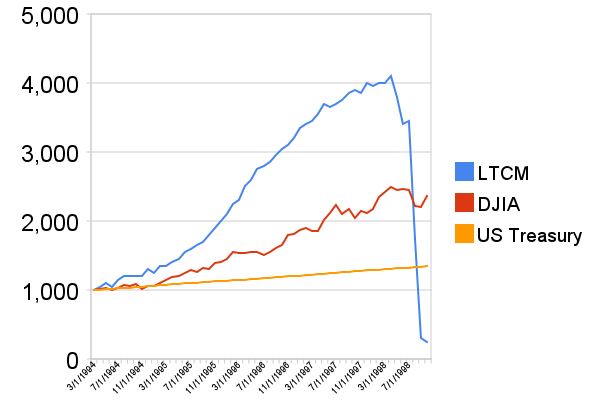“First forget inspiration.
Habit is more dependable.
Habit will sustain you whether you're inspired or not.
Habit is persistence in practice.”
— Octavia Butler
***
Nothing will change your future trajectory like habits.
We all have goals, big or small things which we want to achieve within a certain time frame. Some people want to make a million dollars by the time they turn 30. Some want to lose 20lb before summer. Some want to write a book in the next 6 months. When we begin to chase an intangible or vague concept (success, wealth, health, happiness) making a tangible goal is often the first step.
Habits are processes operating in the background that powers our lives. Good habits help us reach our goals. Bad ones hinder us. Either way habits powerfully influence our automatic behavior.
The difference between habits and goals is not semantic. Each requires different forms of action. For example:
- We want to learn a new language. We could decide we want to be fluent in 6 months (goal), or we could commit to 30-minutes of practice each day (habit.)
- We want to read more books. We could set the goal to read 50 books by the end of the year, or we could decide to always carry one (habit.)
- We want to spend more time with family. We could plan to spend 7 hours a week with family (goal), or we could choose to eat dinner with them each night (habit.)
The Problems With Goals
When we want to change an aspect of our lives, setting a goal is often the logical first step. Despite being touted by many a self-help guru, this approach has some problematic facets.
Goals have an endpoint. This is why many people revert to their previous state after achieving a certain goal. People run marathons, then stop exercising altogether afterward. Or they make a certain amount of money, then fall into debt soon after. Others reach a goal weight, only to spoil their progress by overeating to celebrate.
Goals rely on factors which we do not always have control over. It’s an unavoidable fact that reaching a goal is not always possible, regardless of effort. An injury might derail a fitness goal. An unexpected expense might sabotage a financial goal. A family tragedy might impede a creative output goal. When we set a goal, we are attempting to transform what is usually a heuristic process into an algorithmic one.
Goals rely on willpower and self-discipline. As Charles Duhigg wrote in The Power of Habit:
Willpower isn’t just a skill. It’s a muscle, like the muscles in your arms or legs, and it gets tired as it works harder, so there’s less power left over for other things.
Keeping a goal in mind and using it to direct our actions requires constant willpower. During times when other parts of our lives deplete our supply, it can be easy to forget it. For example, the goal of saving money requires self-discipline each time we make a purchase. Meanwhile, the habit of putting $50 in a savings account weekly requires little effort. Habits, not goals, make otherwise difficult things easy.
Goals can make us complacent or reckless. Studies have shown that people’s brains can confuse goal setting with achievement. This effect is pronounced when they inform others. Furthermore, unrealistic goals can lead to dangerous or unethical behavior.
The Benefits of Habits
“Habit is the intersection of knowledge (what to do), skill (how to do), and desire (want to do).”
— Stephen Covey
***
Once formed habits operate automatically. Habits take otherwise difficult tasks—like saving money—and make them easy.
The purpose of a well-crafted set of habits is to ensure we reach our goals with incremental steps. The benefits of a systematic approach to achievement include:
Habits can mean we overshot our goals. Let’s say a person’s goal is to write a novel. They decide to write 200 words a day, meaning it should take 250 days. Writing 200 words takes little effort, and even on the busiest, most stressful days they get it done. However, on some days that small step leads to them writing 1000 or more. As a result, they finish the book in much less time.Yet setting ‘write a book in 4 months’ as a goal would have been intimidating.
Habits are easy to complete. As Duhigg wrote;
Habits are powerful, but delicate. They can emerge outside our consciousness or can be deliberately designed. They often occur without our permission but can be reshaped by fiddling with their parts. They shape our lives far more than we realize—they are so strong, in fact, that they cause our brains to cling to them at the exclusion of all else, including common sense.”
Once we develop a habit, our brains actually change to make the behavior easier to complete. After about 30 days of practice, enacting a habit becomes easier than not doing so.
Habits are for life. Our lives are structured around habits, many of them barely noticeable. According to Duhigg’s research, habits make up 40% of our waking hours. These, often minuscule actions which add up to make who we are. William James (a man who knew the problems caused by bad habits) summarized their importance as such:
All our life, so far as it has definite form, is but a mass of habits – practical, emotional, and intellectual – systematically organized for our weal or woe, and bearing us irresistibly toward our destiny, whatever the latter may be.
Once a habit becomes ingrained, it can last for life (unless broken for some reason.)
Habits can compound. Stephen Covey paraphrased Gandhi when he explained:
Sow a thought, reap an action; sow an action, reap a habit; sow a habit, reap a character; sow a character, reap a destiny.
In other words, building a single habit can have a wider impact on our lives. Duhigg calls these ‘keystone habits.'
These behaviors which cause people to change related areas of their lives. For example, people who start exercising daily may end up eating better and drinking less. Likewise, those who quit a bad habit may end up replacing it with a positive alternative.
Habits can be as small as necessary. A common piece of advice for those seeking to build a habit is to start small. Stanford psychologist BJ Fogg recommends ‘tiny habits’, such as flossing one tooth. Once these become ingrained, the degree of complexity can increase. If you want to read more you can start with 25 pages a day. AFter this becomes part of your routine, you can increase the page number to reach your goal.
Habits can be as small as necessary. A common piece of advice for those seeking to build a habit is to start small. Stanford psychologist BJ Fogg recommends ‘tiny habits’, such as flossing one tooth. Once these become ingrained, the degree of complexity can increase. If you want to read more you can start with 25 pages a day. AFter this becomes part of your routine, you can increase the page number to reach your goal.
Why a Systematic Approach Works
“First we make our habits, then our habits make us.”
— Charles C. Nobel
***
By switching our focus from specific goals to creating positive long-term habits, continuous improvement can become a way of life. This is evident from the documented habits of many successful people.
Warren Buffett reads all day to build the knowledge necessary for his investments.
Stephen King writes 1000 words a day, 365 days a year (a habit he describes as “a sort of creative sleep.”) Athlete Eliud Kipchoge makes notes after each training session to establish areas which can be improved. These habits repeated hundreds of times over years, are not incidental. With consistency, the benefits of these non-negotiable actions compound and lead to extraordinary achievements.
While goals rely on extrinsic motivation, habits are automatic. They literally rewire our brain.
When seeking to attain something in our lives, we would do well to invest our time into forming positive habits, rather than concentrating on a specific goal.










